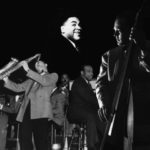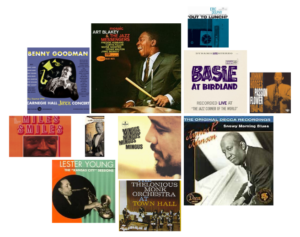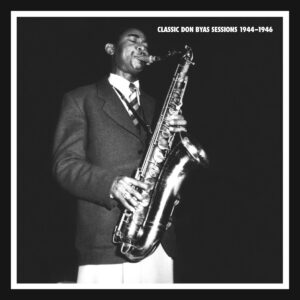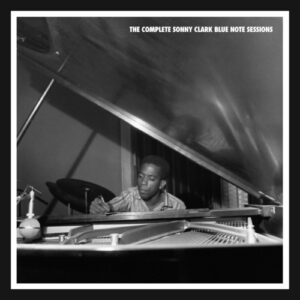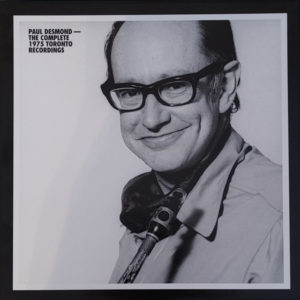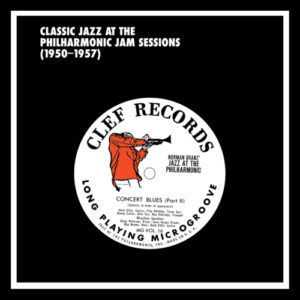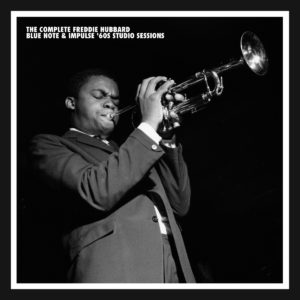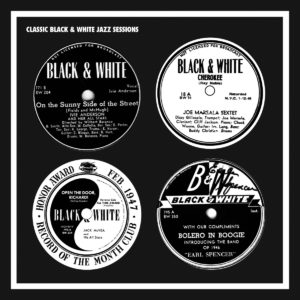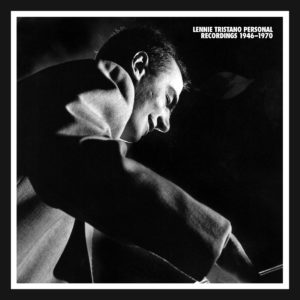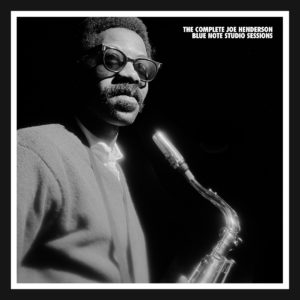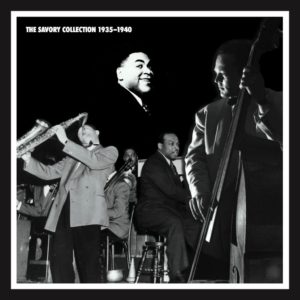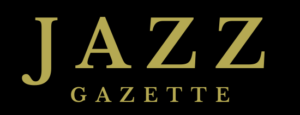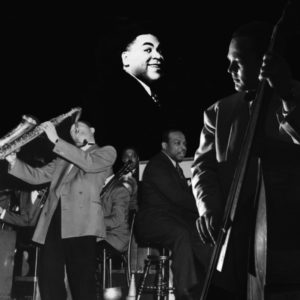Buddy Rich
“As with any drummer, fast tempos gave Rich his most spectacular showcases. He would rip off terse breaks, sometimes in a blur of machine guns fire, other times with the most unexpected twist of time or phrase.” - John McDonough
Buddy Rich
“The beauty of such playing was that it did not intrude on the featured player. Buddy Rich used deep cut 11-inch Zildjian cymbals on his hi-hat stand, and he devised a unique way of playing them – barely spread apart, with his left hand guiding the angle of the cymbals while his right hand manipulated the drumstick in a manner that produced a thicker, fuller sound from the ‘chocked’ hi-hats, rather than the ‘tip-ta-tip, tip-ta-tip’ response that most drummers elicited from their sock cymbals.” – Mel Torme
By John McDonough
Buddy Rich was born September 30, 1917, into a family of vaudevillians and promptly showed unusually precocious motor skills. He walked and talked before most kids crawled. Buddy Rich’s gift seemed to obey most of the laws that generally govern the life of an authentic prodigy.
By all accounts, his history with the drums began in infancy, far ahead of any capacity he might have developed to remember any formative incidents. Then during a rehearsal in Ft. Wayne, Indiana, in 1919, young Rich grabbed a pair of drumsticks and began tapping out accurate patterns of tempo on the floor of the stage.
Onlookers were astonished. He was 18 months old.
Buddy Rich made his record debut late in 1937 at Decca in a pick-up unit backing the Andrews Sisters, then marked time playing swing/Dixieland with Marsala at the Hickory House for six months. He joined Bunny Berigan and found himself in his first important swing band. Rich recorded 24 sides with Berigan in five Victor sessions. There is an added brightness to the rhythm section on some of the better sounding discs, but for whatever reason – the nature of the charts or the band’s declining fortunes – his imprint is not particularly evident or palpable on the records.
All that changed in late December when Buddy Rich joined Artie Shaw and make his breakthrough to the big time.
Buddy Rich & Artie Shaw
Shaw’s Bluebird disc of Traffic Jam sounds more like a live broadcast with its audible shouts of encouragement from Rich – extraordinary for an ostensibly formal studio performance.
If the Berigan orchestra was afflicted by declining fortunes, the Shaw band was at its peak and rising. Tenor saxophonist Georgie Auld had left Berigan for Shaw in mid-December, and 10 days later Rich followed. Suddenly everything moved to a new level.
The recordings, both in studio and over the air, are unmistakable. Rich became a one-man insurgency, constantly challenging, pressing, and literally cheering the band on, sometimes with a wildly delightful lack of restraint. Many of the band’s broadcast performances have become classics, largely because of Rich galvanizing impact.
Shaw may have complained that Rich lacked discipline and rushed the tempo but he also recognized a kindred temperament whose confidence was exceeded only by his brilliance and his lack of respect for authority. Shaw understood such men well because he understood himself. So he gave him space to grow, which was precisely the kind of authority that Rich did respect.
By the time Shaw gave up his great 1939 band, Rich had not only logged enormous record and radio exposure with the country’s top orchestra, but valuable screen time as well in MGM’s Dancing Co-ed plus two short theatrical features. He was famous.
And the Down Beat readers poll of January 1940 reflected his impact. After one year with Shaw, he has gone from complete anonymity to fifth place among drummers – though he still trailed Krupa by more than 4,200 votes. A year later he pulled to within nearly 200 votes of the top position.
Buddy Rich joined the Tommy Dorsey organization directly from Shaw’s orchestra in November 1939. Rich became an even bigger star with Dorsey, whose bandwagon of soloists and singers constituted a full scale, self-contained variety show. Rich had no trouble competing with the likes of Frank Sinatra, Jo Stafford, Ziggy Elman, Joe Bushkin and, even briefly, his old boss Bunny Berigan. Refereeing this cauldron of talent and temperament was Tommy Dorsey, whose ego yielded to no one’s.
Though a full time bandleader after the war, Rich still found time for moonlighting when the bait was sufficient to draw him out. The bait was enticing indeed in the spring of 1946 when a young producer prevailed upon him to join pianist Nat Cole on Lester Young’s first record session since his discharge from the Army.
It was Rich’s first professional encounter with Norman Granz. Through Granz, there was hardly an important figure of the period with whom Rich would not work or record over the next decade: Charlie Parker, Dizzy Gillespie, Roy Eldridge, Count Basie, Oscar Peterson, Art Tatum, and countless others. He joined the fall JATP tour in 1949.
John McDonough; liner note excerpts from Mosaic Records: The Classic Argo, Emarcy and Verve Small Group Buddy Rich Sessions
The Freelance Years
By Scott Yanow
Buddy Rich was a surprisingly tasteful player with small combos. While he could always cut loose and completely steal the show, he was wise enough to mostly play in the background, only coming to the spotlight when it was his turn to solo. By following his relatively quiet accompaniment with explosive solos, he was able to make dramatic statements that certainly woke up audiences.
Producer Norman Granz always liked Buddy Rich’s playing and agreed with him that he was the world’s greatest drummer. Starting in 1946 and continuing through 1956, he used Rich on many recording dates, teaming him with the all-stars who recorded for him for the Mercury, Clef, Norgran and Verve labels. The drummer also occasionally recorded for other labels.
Rich, who cut three titles with Ella Fitzgerald and her V-Disc Jumpers in 1945, including a feature called “That’s Rich”, in 1946 appeared on a few Jubilee radio shows including a three-song medley featuring altoists Charlie Parker, Benny Carter and Willie Smith, and on two numbers that teamed Lester Young with the King Cole Trio on Mar. 20, 1946.
A short time after the latter, Rich was picked by Norman Granz to record with Young and Cole in a trio, resulting in eight titles that have been reissued often by Verve. While those performances probably would have benefitted from an inclusion of a string bass, the interplay between Young and Cole along with Rich’s mostly quiet backing resulted in classic music.
Several times during 1946-54, Rich toured with Granz’s Jazz At The Philharmonic, The drummer was always a popular attraction at the traveling jam sessions, which gave him opportunities to play with the likes of trumpeters Roy Eldridge, Dizzy Gillespie, Harry “Sweets” Edison and Buck Clayton, Charlie Parker, Willie Smith, tenors Lester Young, Coleman Hawkins and Flip Phillips and, by the early 1950s, the Oscar Peterson Trio.
Jazz At The Philharmonic Tour
The Closer
Carnegie Hall, New York – 1949
The Sept. 18, 1949 recorded concert was one of the most exciting of all, climaxed by a battle between Rich and Eldridge on “The Closer.” The band that day also included the boisterous and fluent trombonist Tommy Turk, Charlie Parker, Flip Phillips, Lester Young, Coleman Hawkins, Hank Jones, Ray Brown and Ella Fitzgerald. The drummer was touring with the best in the business.
On the JATP tour of 1952, Gene Krupa was also part of the groups. Norman Granz could not resist so Rich and Krupa had nightly drum battles. It really was not fair because Rich could slaughter his former idol anytime he wanted, but mostly he showed self-restraint and respect while making it clear who was the superior drummer. The recorded drum battles are not as exciting as one would hope since the visual element is missing.
Rich was also part of the Metronome All-Stars sessions of Dec. 15, 1946 (an all-star nonet that included vocals by his fellow Dorsey sideman Frank Sinatra, June Christy and Nat King Cole) and, on Dec. 21, 1947 with a bop-oriented version that included Dizzy Gillespie and Buddy DeFranco.
With the breakup of his big band, Buddy Rich was at liberty for JATP tours and recordings as a sideman. While one does not necessarily associate Rich with Charlie Parker, he was on the two main “Bird With Strings” date (which included “Just Friends”), a quartet set with Bird that resulted in “Star Eyes,” and was part of a remarkable quintet that Granz assembled that consisted of Parker, Gillespie, Thelonious Monk, and bassist Curly Russell.
The only record date that teamed together Parker, Gillespie and Monk. And the only session on which Rich got to play with Monk.
Art Tatum, Lionel Hampton & Buddy Rich
Makin’ Whoopee
1955
Buddy Rich met up with the remarkable Art Tatum on two of Tatum’s group masterpiece sessions of 1955: in a trio with Lionel Hampton and on a sextet date that also included Hampton and Edison. Although he gets some solo space, Rich wisely did not try to challenge Tatum, leaving plenty of space for the wondrous pianist.
The final freelance assignment that Buddy Rich took from Norman Granz before he began trying different things was the Ella And Louis album (Aug. 16, 1956) with Ella Fitzgerald, Louis Armstrong and the Oscar Peterson Trio. Any detractor who claims that the drummer had to be a dominant force every time he played are advised to hear how tastefully and quietly he accompanies the singers.
In 1956, Buddy Rich was still just 39. He had only led a few combo sessions for Granz (including Buddy And Sweets) during the ‘50s and had recently decided to attempt a career as a singer. However that went nowhere; his voice was just not appealing. Instead he led a short-lived small group during 1960-61 (fully documented on the Mosaic box set The Argo/Emarcy/Verve Small Group Sessions) and then went back to playing with the Harry James Orchestra, getting known as the highest paid sideman in the business.
After the surprise success of the Buddy Rich Big Band in 1966, he would once again become famous for his work with big bands. But, as his all-star combo dates of 1946-56 show, “the world’s greatest drummer” was also masterful with small groups.
Buddy Rich
Selected Jazz Albums
By Scott Yanow
Swingin’ New Big Band (Pacific Jazz):
Swingin’ New Big Band (the CD reissue adds nine “new” selections to the original eight-song program) has arrangements by Oliver Nelson, Bill Holman, Phil Wilson, and others for Rich’s 17-piece band. Tenor-saxophonist Jay Corre, altoist Pete Yellin, trumpeter Don Rader, and pianist John Bunch are among the key soloists with colorful versions of “Sister Sadie,” “What’d I Say,” and “Hoe Down” being among the highlights.
Best of all is the classic “West Side Story Medley” which has an outstanding Rich solo. That Bill Reddie chart would become a permanent part of the Buddy Rich’s big band library.
Big Swing Face (Pacific Jazz):
Plenty has been written about Buddy Rich’s personality. His reasoning was that he practically killed himself during every performance so his sidemen should always do the same. When he felt that they fell short, he would let them know. Rich alternated kindness with temper tantrums. His star sidemen (such as Ernie Watts, Richie Cole, and Bill Cunliffe) always said that they were treated well, but some of his less important section players, particularly those who questioned his authority, did not fare so well. He drove them relentlessly and they ended up either exceeding their potential or wilting under the pressure.
Although Buddy Rich was never shy to express his disdain for rock, he was open to utilizing rock and funk rhythms at times (as if to show the younger players how to do it right) and performing the better pop tunes of the time in addition to more swinging charts.
Big Swing Face, which is greatly expanded in the CD version, features the Buddy Rich Orchestra performing live in 1967. Among the more memorable selections are “Norwegian Wood,” “Love For Sale,” “Mexicali Nose,” and “Bugle Call Rag” with Rich’s young daughter Cathy Rich singing “The Beat Goes On.” Ernie Watts (on alto), Jay Corre and trumpeter Bobby Shew are among the solo stars in addition to the leader.
Mercy, Mercy (Pacific Jazz)
Of all the recordings by the Buddy Rich Big Band, this is the most essential one. Performing at Caesar’s Palace in Las Vegas on July 7, 1968, the band romps through “Mercy, Mercy, Mercy,” altoist Art Pepper (who was having a brief early comeback) is featured on “Alfie” and “Chelsea Bridge” (the latter is one of three numbers added to the CD reissue), and tenor-saxophonist Don Menza is a powerhouse throughout.
“Channel One Suite” is a classic, a multi-sectioned arrangement by Bill Reddie that gives Menza a chance to take an unaccompanied solo (displaying some circular breathing) before Rich creates a dazzling and memorable solo, one of his greatest on record. Even though one cannot see him, his playing will stick in one’s mind afterwards.

